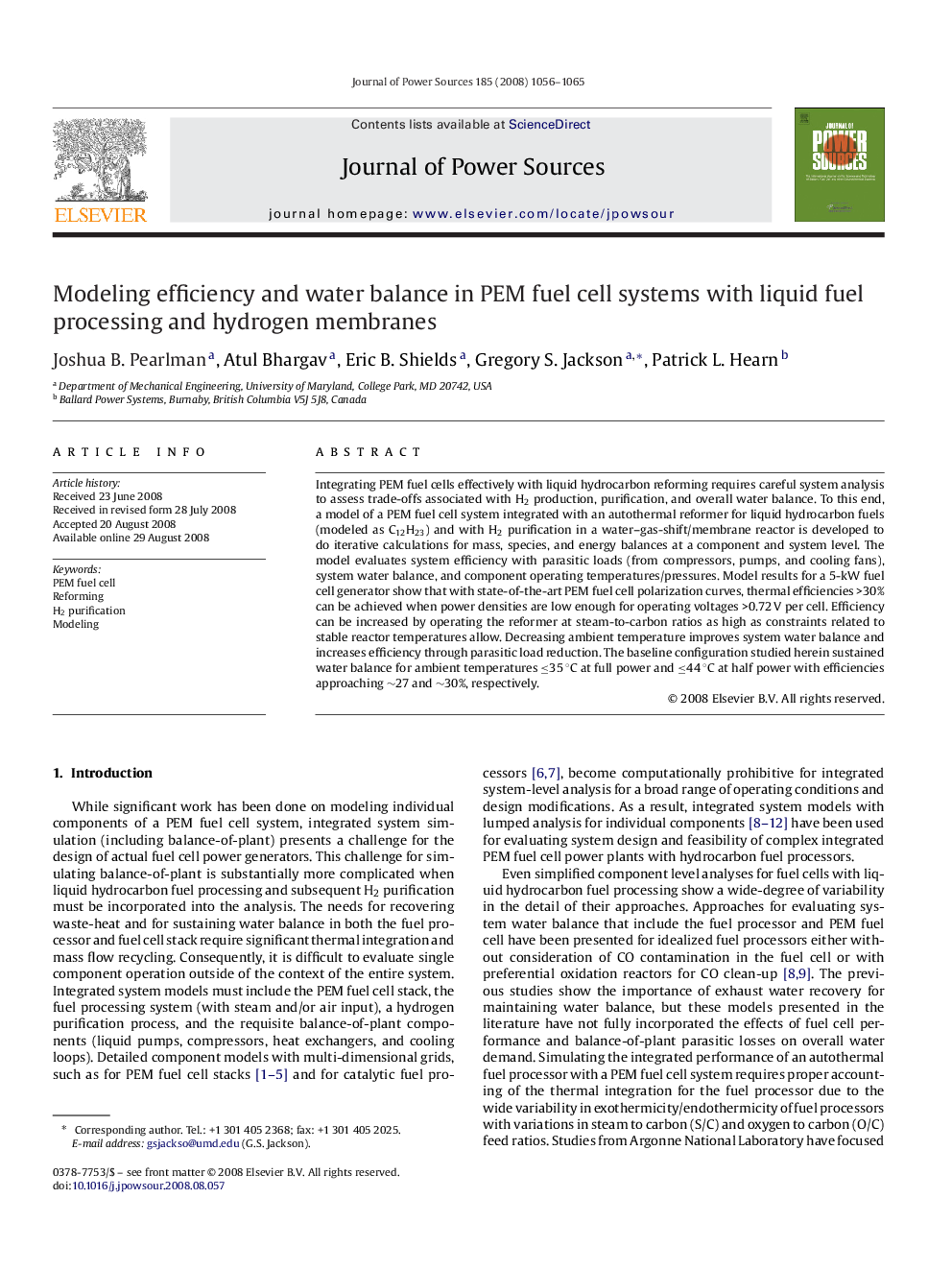| Article ID | Journal | Published Year | Pages | File Type |
|---|---|---|---|---|
| 1290224 | Journal of Power Sources | 2008 | 10 Pages |
Integrating PEM fuel cells effectively with liquid hydrocarbon reforming requires careful system analysis to assess trade-offs associated with H2 production, purification, and overall water balance. To this end, a model of a PEM fuel cell system integrated with an autothermal reformer for liquid hydrocarbon fuels (modeled as C12H23) and with H2 purification in a water–gas-shift/membrane reactor is developed to do iterative calculations for mass, species, and energy balances at a component and system level. The model evaluates system efficiency with parasitic loads (from compressors, pumps, and cooling fans), system water balance, and component operating temperatures/pressures. Model results for a 5-kW fuel cell generator show that with state-of-the-art PEM fuel cell polarization curves, thermal efficiencies >30% can be achieved when power densities are low enough for operating voltages >0.72 V per cell. Efficiency can be increased by operating the reformer at steam-to-carbon ratios as high as constraints related to stable reactor temperatures allow. Decreasing ambient temperature improves system water balance and increases efficiency through parasitic load reduction. The baseline configuration studied herein sustained water balance for ambient temperatures ≤35 °C at full power and ≤44 °C at half power with efficiencies approaching ∼27 and ∼30%, respectively.
